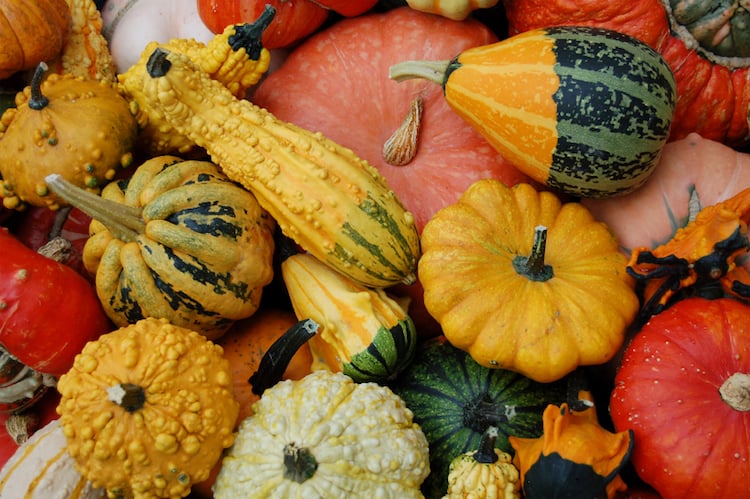The best in-season vegetables to eat right now

Do you know what foods are in season right now? If the answer is no, don’t feel bad. Thanks to worldwide shipping and genetic modifications, US shoppers are used to getting whatever vegetables and fruits they want, at any time. So, why should you care about eating seasonally?
The biggest benefits to in-season foods are cost and freshness. Have you noticed that apples just taste better in the fall? Tomatoes are juicier in the summer? That’s because when a food is in season, it doesn’t need to travel as far to get to your grocery store. When vegetables or fruits have to travel a long way, they are often picked before peak freshness so that they don’t arrive soiled. This can additionally cause the foods to lose some of their health benefits because their ripening process is being compromised. Some damage is bound to happen in any fruits’ journey from the farm to the grocery store, but that damage is greatly minimized when the store is only 50 miles from the farm.
In-season foods are cheaper because there is less labor involved. If a food is coming from South America, think about how many more people are involved with getting that food to New York. That’s a long way for some bananas to travel! Not only is local, seasonal food cheaper, but it will also be available in abundance. Think about how inexpensive farmers’ market veggies can be – herbs by the bunch and crates of fruit all significantly cheaper than they are at your local grocery store (unless they are specialty foods, in which case they can be more expensive). Local means the farmer only needs to pack up a truck and drive a few hours; no giant shipping container needed! Not all local options will be cheaper, but if you value fresh food and supporting local businesses, that trade-off may feel worth it.
If you feel you can’t afford to go local, you can still eat seasonally! Look up what’s in season: Eat the Seasons has a general guide, and Eat Well has a customizable search engine to see what restaurants near you offer local foods. Write down whatever seasonal foods appeal to you and look for them in the grocery store. Chances are, broccoli is cheaper than zucchini right now (if it’s locally sourced). Don’t worry too much about being fully local – even buying foods from around the country will be better than buying something from South America.
We’ve compiled a few of the best recipes for in-season winter foods. Check it out below!
Butternut Squash Soup via Cookie and Kate
What’s winter without a hearty soup? Butternut squash soup is a well-loved option. Luckily, this soup never contains any heavy creams, because the squash is naturally thick and sweet enough on its own. Who wouldn’t want a steaming bowl of this after a cold winter day?
Roasted Sweet Potatoes and Kale with Poached Eggs via Taste Spotting
This recipe packs two winter foods into one! Great for breakfast, lunch, or dinner, this recipes is sure to fill you up while providing you lots of nutrients (and a bit of protein). If you want to reduce the calorie count on this meal, try using a bit less olive oil. Enjoy!
Pan-Roasted Brussels Sprouts and Sunchokes with Lemon Vinaigrette via Tasting Table
Sunchokes are one of those foods you’ve seen around the grocery store, but you never had any idea what to do with it. Sunchokes have a nice dose of Vitamin C, and also provide probiotics, which help with gut health. This vinaigrette is made with Greek yogurt, making it a light, refreshing option for dinner.
Kiwi, Grapefruit, and Oranges
Fruit recipes are often salad or dessert-based. Top any salads with these fruits for a delicious and naturally sweet addition. We recommend blending them together in a smoothie for a refreshing drink, or use them to top your yogurt. Or enjoy them on their own for a yummy, healthy dessert or snack!
Crab Cakes with Spicy Rémoulade via Cooking Light
Fruits and veggies aren’t the only seasonal foods – meats and fish are too! Crab cakes are a popular choice that are often breaded and made unhealthy. This recipe lightens up the traditional crab cake and clocks in at just under 300 calories per serving – now that’s something to celebrate!

